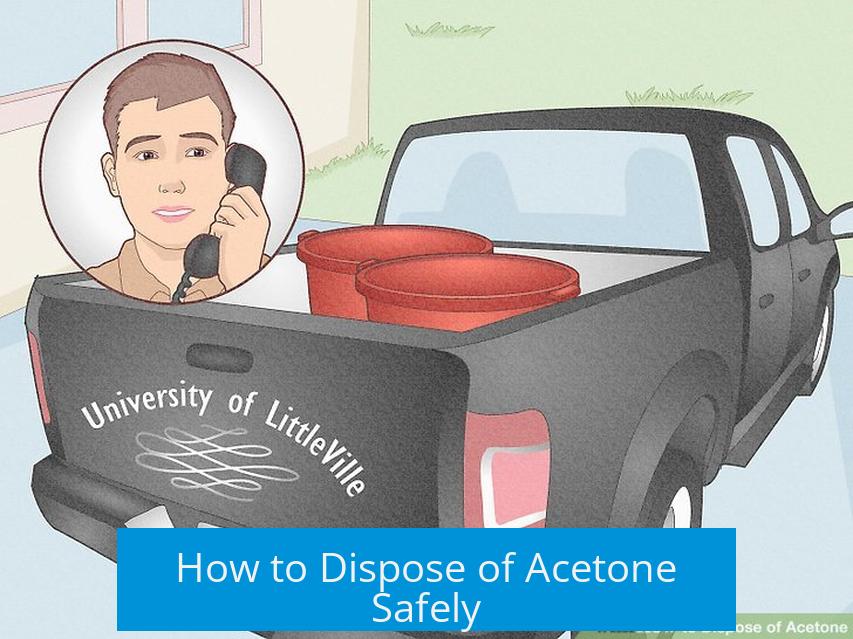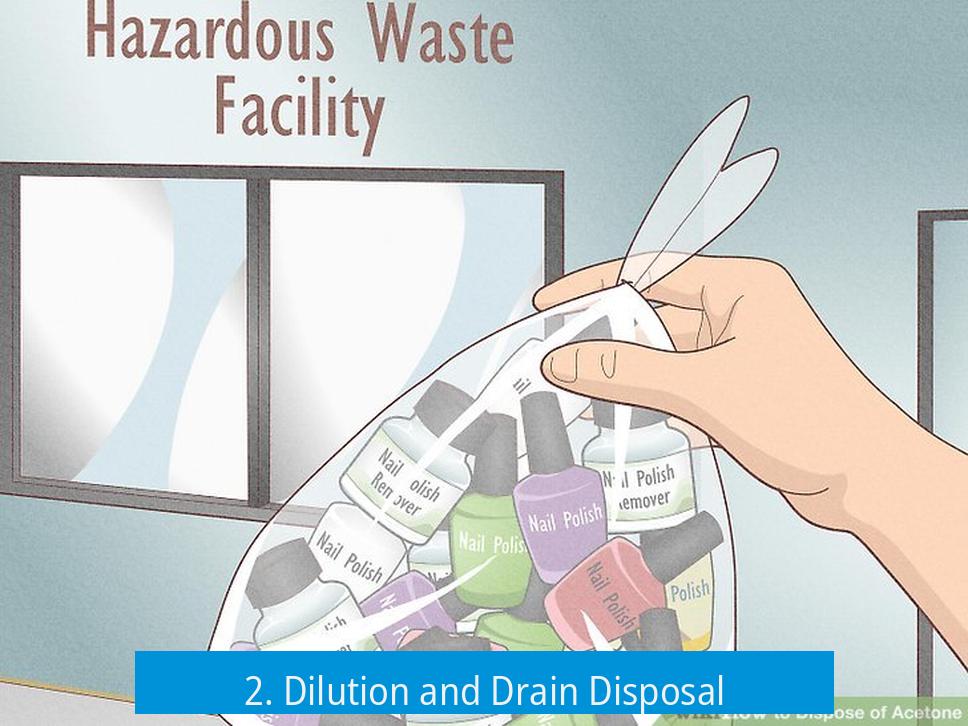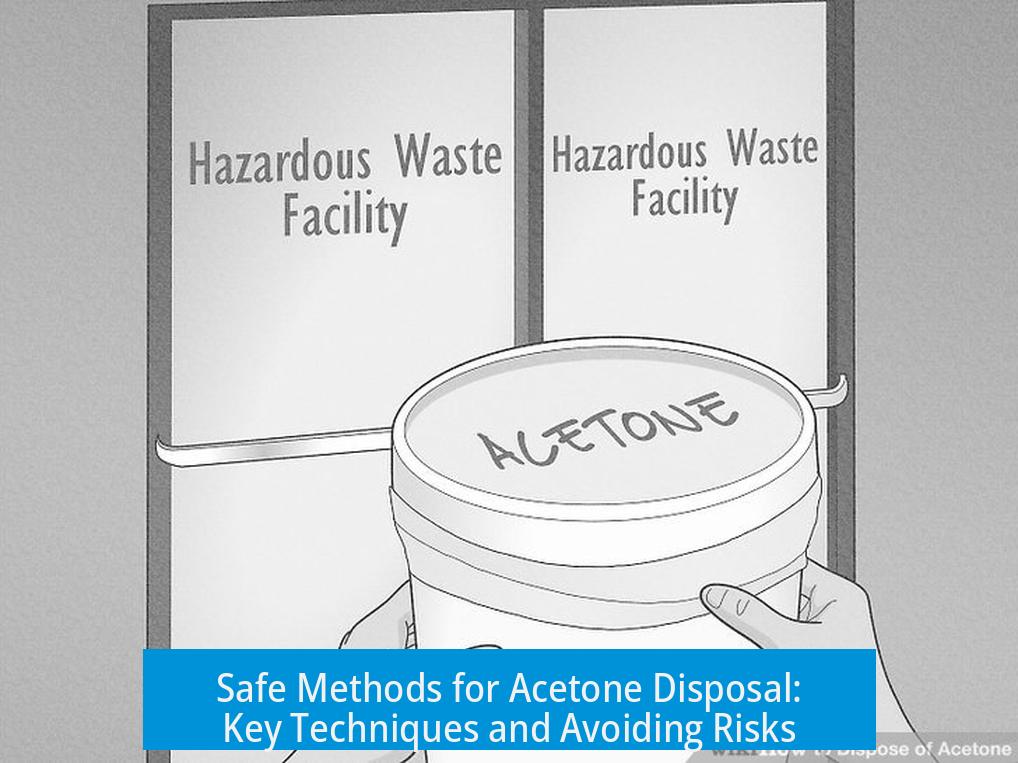How to Dispose of Acetone Safely

Proper acetone disposal involves taking it to local hazardous waste facilities, diluting and draining with water when safe, or allowing evaporation in a controlled setting. Avoid dumping into the environment or unregulated burning. This article covers effective and safe methods for acetone disposal.
1. Disposal at Hazardous Waste Facilities
The safest disposal method is delivering acetone to a local hazardous waste disposal site. Collect acetone in a proper container and inform the facility about the substance. Many municipalities accept small quantities of household solvents free or at low cost. This guarantees adherence to environmental laws.
2. Dilution and Drain Disposal

For small amounts, acetone can sometimes be diluted with water and poured down a drain connected to a sewer system. Follow these guidelines:
- Dilute acetone 1:10 with water.
- Flush with running water for several liters.
- Ensure the drain is designed to handle solvents; acetone highly diluted does not damage typical plastic pipes due to its high water affinity.
This method reduces inhalation risks by lowering vapor pressure. However, verify local regulations, as some areas forbid solvent disposal via drains.
3. Evaporation Techniques
Evaporation is a low-tech option for small acetone volumes. Pour it into an open, wide container and place it outdoors, away from ignition sources and heat. The acetone evaporates within days at room temperature.
Alternatively, absorb acetone into sawdust spread over a tarp or paved surface. After saturation, allow it to evaporate. The spent sawdust can then be disposed of since no volatile compounds remain. This method limits volatile organic compound release into the air responsibly.
4. Burning and Incineration
Burning acetone must occur only in professional chemical incinerators equipped with afterburners and scrubbers. This ensures complete combustion and minimizes air pollution. Attempting uncontrolled burning is hazardous due to acetone’s high flammability and rapid ignition.
Some anecdotal reports describe mixing acetone with waste oils to start fires outdoors. This practice is unsafe and environmentally unsound. Avoid burning acetone outside or in improvised setups.
5. Avoid Improper Disposal Methods
- Do not dump acetone into natural water bodies such as rivers or lakes.
- Avoid burying acetone in soil or dumping in landfills untreated.
- Never store used acetone uncovered as it emits hazardous vapors.
Improper disposal leads to environmental contamination and health risks.
6. Reuse and Alternative Uses
Given its solvent properties, acetone can often be reused when uncontaminated. Simple distillation restores purity for later use. Retaining acetone can reduce waste in home or professional settings. However, limit storage amounts to reduce hazards.
Some use acetone in controlled applications such as thinning paints or cleaning, but these uses should follow safety guidelines.
Summary of Key Points
- Take acetone to a local hazardous waste disposal site whenever possible.
- Small amounts can be diluted 1:10 with water and poured down the drain if local rules allow.
- Evaporate acetone safely in open containers away from flames or absorb it using sawdust outdoors.
- Burning acetone is hazardous and should only be done in proper incinerators.
- Avoid dumping acetone in rivers, burying it, or uncontrolled outdoor burning.
- Reuse acetone after distillation to reduce waste and exposure.
How can I safely dispose of small amounts of acetone at home?
Dilute the acetone with water at about a 1:10 ratio. Pour the mixture slowly down the drain while running plenty of water. This reduces inhalation risks and protects pipes. Always check local guidelines first.
Is it safe to let acetone evaporate outside?
Yes, pouring acetone into an open container outdoors allows it to evaporate safely. Keep it away from flames and heat sources during evaporation to prevent fire hazards.
What is the recommended method for disposing of large quantities of acetone?
Take large amounts to a local hazardous waste disposal site. These locations handle flammable solvents properly and limit environmental impact.
Can acetone be burned safely at home?
Burning acetone is risky due to its flammability. Proper disposal requires a chemical incinerator with safety controls. Avoid open burning or use as fuel without professional equipment.
Is absorbing acetone with sawdust an effective disposal method?
Yes, spread sawdust on a tarp outdoors and pour acetone over it. After the acetone fully evaporates, dispose of the sawdust normally, as no harmful vapors remain.





Leave a Comment